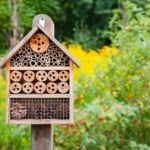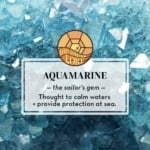What The Heck Is Kuchen?
Kuchen means "cake" and this one is delicious! Learn the origins of this traditional German dessert and how to make it!

Kuchen (pronounced “koo-ken”) is the German word for “cake,” but a real kuchen is so much more than that! Traditional kuchen is like a delicious mash-up of cake and pie, topped with creamy custard. This dessert is very popular in Germany, and you’ll find that many communities in the United States carry on the tradition of cooking kuchens. In fact, kuchen is the official state dessert of South Dakota. So where did it come from? And how do you make it? Read on!
The Origins of Kuchen
It’s unclear exactly how long custard-topped kuchens have been around. However, we do know that kuchen is part of a 400-year-old “Kaffee and Kuchen” (or Coffee and Cake) tradition. This tradition is much like teatime in Great Britain – on Sundays, between 3:00 and 5:00 p.m., many Germans gather with friends and family to enjoy cakes, kuchens, and other confections, over a hot cup of coffee or tea.
How Kuchen Differs From Cake
You might think that cake is cake, no matter where in the world you happen to be eating it, but that just isn’t so! German cakes are quite a bit different from those we’re familiar with in the United States. In fact, German Chocolate Cake is actually an American invention, first made by a Texas woman in 1957, and named for a chocolatier by the name of Samuel German.
In general, true German cakes tend to have much less sugar and a bit more butter or shortening than the cakes we’re most familiar with. That’s why you’ll quite often see German deserts topped with fruit, streusel or whipped topping. When you eat a traditional kuchen, you’ll notice that the dough itself isn’t particularly sweet. Rather, it’s more like plain pastry dough – sometimes with extras like oats for more flavor and texture, or yeast to make it a bit puffier.
When it comes to kuchen toppings, anything goes. Peaches are among the most popular topping, but historically, kuchens were made with whatever fruit was abundant at the time. You’ll find recipes that include apples, plums, apricots, berries, figs and more. Custard is an optional topping – most recipes include it, but not all. Like the dough, you’ll find that the custard is simple and unsweetened, made with only egg yolks and cream or milk.
Peach Custard Kuchen
Ingredients:
Crust:
- 1/4 cup unsalted cold butter, softened
- 1 cup all purpose flour
- 1/8 tsp baking powder
- 1/4 tsp salt
- 2 tbsp granulated sugar
Filling:
- 16 ounces sliced canned peaches, drained (or you can 1 1/2 cups of sliced fresh peaches)
- 1/3 cup sugar
- 1 tsp cinnamon
Custard Topping:
- 1 cup whipping cream
- 2 egg yolks
Instructions:
- Preheat your oven to 400º F.
- Stir together flour, 2 tablespoons sugar, the salt and baking powder.
- Add the butter until the mixture is crumbly.
- Place the mixture into the bottom and sides of an un greased square pan. (8x8x2 is best)
- Mix the sugar and cinnamon together. Pour over the peaches. Then place the peaches into the pan.
- Bake for 15 minutes.
- Blend egg yolks and whipping cream.
- Pour over warm peaches.
- Bake for an additional 25-30 minutes or until custard is set and edges are light brown.
- Serve warm with ice cream if desired. Refrigerate leftovers.
Check out this recipe for Apple Kuchen!

Amber Kanuckel
Amber Kanuckel is a freelance writer from rural Ohio who loves all things outdoors. She specializes in home, garden, environmental, and green living topics.






It says to blend the whipping cream and the eggs but does that mean you just stir them till they are combined or do you beat with a mixer to make thicker?
Here’s another version of kuchen… my German grandmother baked white yeast bread every week. She would take a portion of the unsweet dough for kuchen. In a 9×13 pan, press down all around the bottom. Let raise to the top of the pan. Mix a custard of milk, eggs, sugar to taste. When dough has risen to height, poke holes with finger 1.5” apart. Pour custard mixture over dough. Sprinkle some sugar and cinnamon over the dough. Dot with butter. Bake at 350 or 375 20-30 degrees. Best served warm.
Kuchen comes in many forms and I’ve made many types. One of my favorites is made with rhubarb. One recipe is made with a sour cream base which is delicious!
Ain’t no way it’s pronounced koo-ken.
It definitely is said as you have typed. What makes you say it isn’t? Come to Wisconsin!!
I grew up with it pronounced (koo-ken) as well from my PA Deutsch grandmother. Perhaps other dialects pronounce it differently.
I’m 80 years old and my German born (Leipzig) grandmother made the most wonderful kuchen, using whatever fruit was available I was looking for something else when I stumbled across this recipe. I think it made be close to her (unwritten) recipe and I can’t wait to try it.
We hope you enjoy it!
I used to go to a small family grocery in Minot North Dakota that made Kuchen at least once per week. It was very like homemade, and I have seldom had better. Old German families are a treasure for the community! They used a round pie pan, and the first time I thought I was buying a pie.
My grandmother made her kuchen round as well!
kuchen is the best food i have ever tasted the flavor is crazy to me it tastes like apple pie
My mom, who was from Germany, made kuchen often when I was young. We kids loved it. When I grew older and mentioned kuchen to my friends they wanted to know what planet I was from. Glad I stumbled onto this site. I’ll try this.
Your friends have small minds…glad you woke them up.
I made this recipe and it does not look at all like the picture. It was good, but it looks like many of the other kuchen recipes that are online. In order to achieve this, I think I would need more custard, less crust and more peaches. Is this really a picture of the result some got making this recipe?
What you’re seeing in the picture is an apple kuchen, not a peach kuchen.
I have made and eaten Lebkuchen a lot. It was a traditional Christmas cookie treat. Made with candied fruit, but we never had custard on it just powdered sugar. Maybe that’s po-folks version.